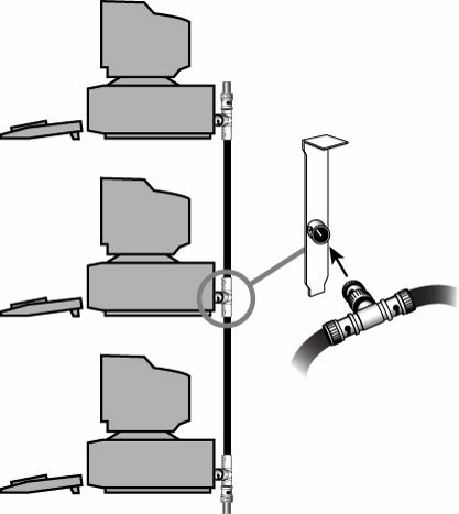Hardware Reference
In-Depth Information
(virtual) topologies, which I discuss as well.
Bus Topology
The earliest type of network topology was the
bus topology
, which uses a single cable to connect all
the computers in the network to each other, as shown in
Figure 17.14
.
This network topology was
adopted initially because running a single cable past all the computers in the network is easier and
uses less wiring than other topologies. Because early bus topology networks used bulky coaxial
cables, these factors were important advantages. Both 10BASE-5 (thick) and 10BASE-2 (thin)
Ethernet networks are based on the bus topology.
Figure 17.14. A 10BASE-2 network is an example of a linear bus topology, attaching all network
devices to a common cable.
However, the advent of cheaper and more compact unshielded twisted-pair cabling, which also
supports faster networks, has made the disadvantages of a bus topology apparent. If one computer or
cable connection malfunctions, it can cause all the stations beyond it on the bus to lose their network
connections. Thick Ethernet (10BASE-5) networks often failed because the vampire tap connecting
the AUI device to the coaxial cable came loose. In addition, the T-adapters and terminating resistors
on a 10BASE-2 Thin Ethernet network could come loose or be removed by the user, causing all or
part of the network to fail. Another drawback of Thin Ethernet (10BASE-2) networks was that adding
a new computer to the network between existing computers might require replacement of the existing
network cable between the computers with shorter segments to connect to the new computer's
network card and T-adapter, thus creating downtime for users on that segment of the network.
Ring Topology
Another topology often listed in discussions of this type is a
ring
, in which each workstation is


